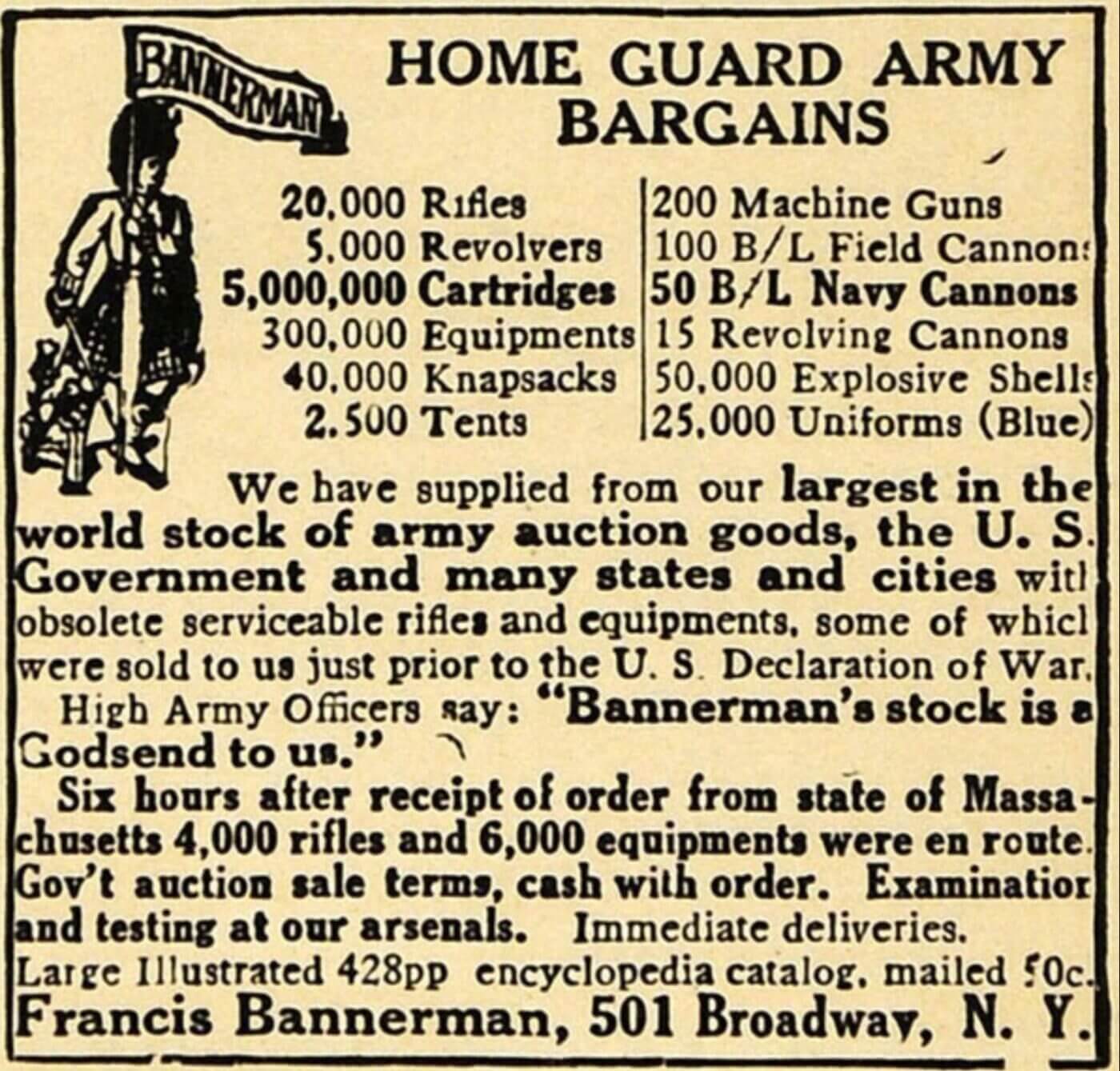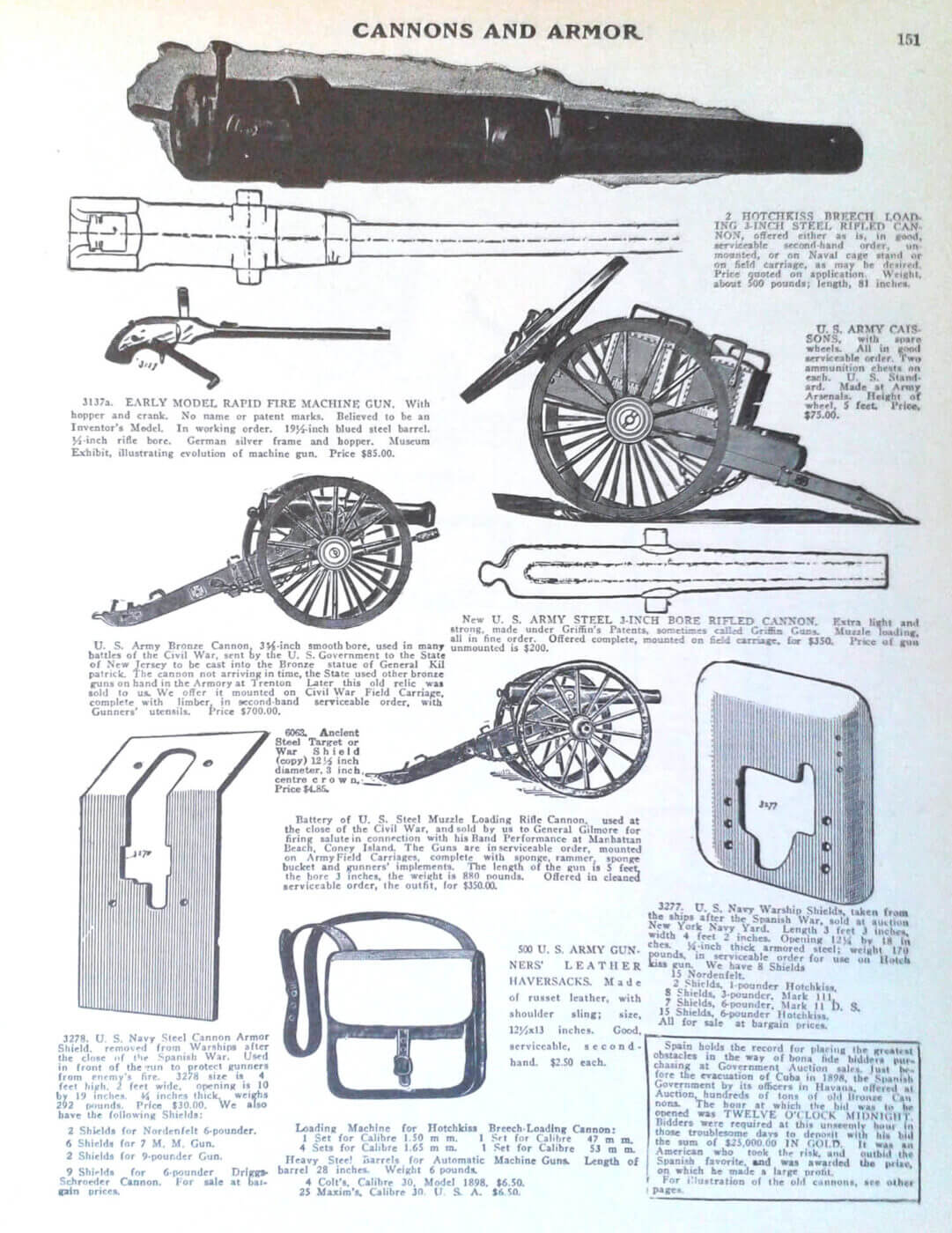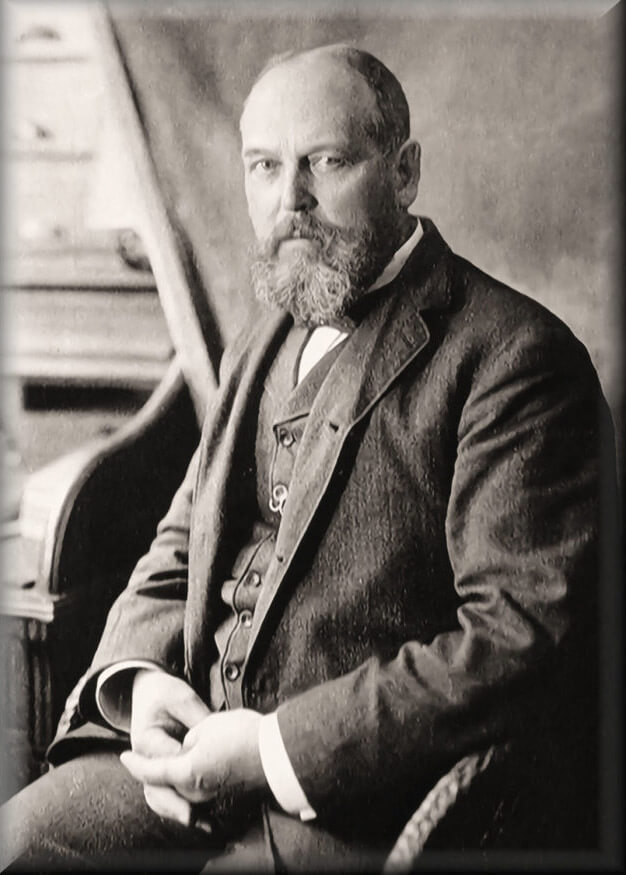George Washington even proposed using the island as a prison camp, but it never materialized.
By 1900, the military surplus market was booming.
Francis was purchasing arms and accoutrements at a breakneck pace.

Not only would it afford him the space he needed, but it also offered supreme security.
To say that his business was massive would be an understatement.
In the 1870s, he bought 200,000 Springfield muskets, selling them for $5 each.

That supply lasted more than 60 years, right into the 1930s.
Selling both from his store and a mail-order catalog, Bannermans inventory and catalogs were the stuff of legends.
His store became a must-see sight in New York City, and the catalogs were hundreds of pages long.

You could even buy WWI-era German surplus caskets (unused, thankfully) for $15.00.
Truly, there was something for everyone.
Foreign governments turned to Bannerman, too, when they were running low on arms and ammo.

Honduras, Spain, Haiti and Japan were among some of his customers.
Japan alone bought 20,000,000 rounds of ammo from him in 1905!
By the conclusion of World War II, things were nearing the end.

Much of the surplus arms and accoutrements owned by Bannermans company dated to the 19th century.
In 1950, the islands ferry boat sank in a storm.
Without a mode of transport to reach the island, Bannermans Island Arsenal was abandoned.

Bannermans Castle sat in ruins, off limits to visitors, for decades.
They even offer special guided tours of the island.
First, lets get the negative part out of the way.

The View of History
Bannerman was a businessman, first and foremost.
If there was a way to alter his inventory to maximize profit, he did it.
For example, Confederate items fetched more than their Union counterparts.

As such, plenty of spuriously-marked CSA stuff came out of his store.
Some of the earliest sporterized cut-down guns came from him, too.
His customers wanted shorter guns, so many of his milsurp rifles had hacksaws taken to the barrels.
Rifles in odd or foreign calibers not selling?
Thats nothing a backroom rechambering cant fix!
Now, lets look at the positive impact of his legacy.
No longer of military use, theyre now on display for all to appreciate.
Old uniforms were sold to marching bands and theater groups, helping outfit them in an economical manner.
He truly was the godfather of milsurp.




